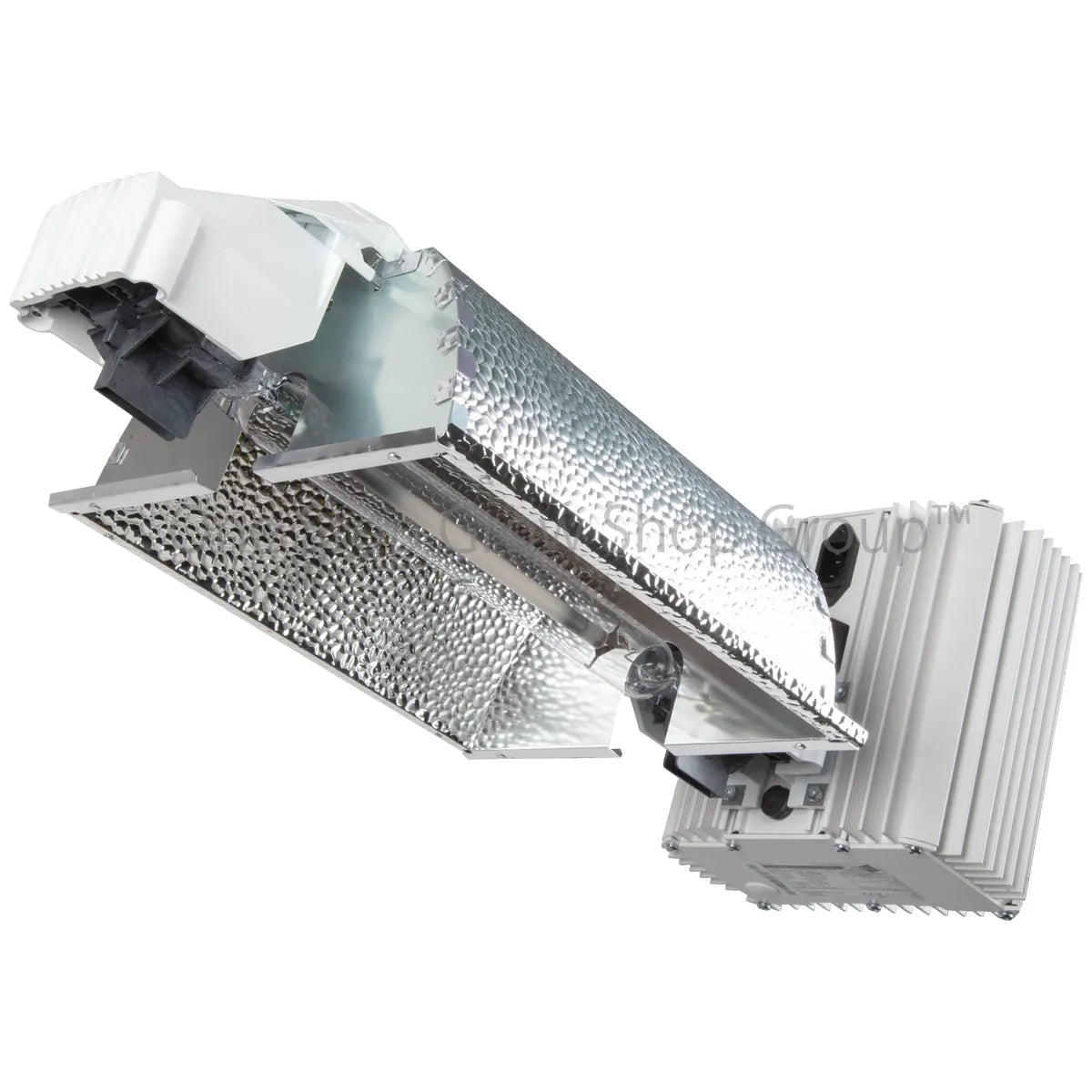Horizontal Spread vs Vertical Intensity. Which is best?
We've always been huge fans of Gavita Pro Grow Lights. They brought the horticultural industry's 400 Volt HPS systems to the hobbyist/domestic market, which gave us all the opportunity to achieve more μmols of PAR per watt than the standard 230 Volt systems that we were used to. In fact, they produce at least 10% (and up to 20%) more PAR light than the equivalent wattage in standard systems, bringing with them a corresponding increase in yield and garden efficiency.
Originally, Gavita Pro lights were designed for large installations such as multi-light grow rooms and as supplementary lighting in greenhouses. The reflectors were designed for ceiling mounting, in many cases several feet above the plant canopy. In this method of application, the reflectors do an admirable job, creating a spread and footprint that makes the most of the all the light produced. The standard Gavita reflector creates a strong but fairly direct-down pattern of light, meaning that for the best footprint the lights needs to be hung at a certain minimum height.
Fairly recently, Gavita took an extra step to improving the versatility of their DE, or double-ended, lamp fixtures by producing a wide-angle reflector which can be used with one of their Gavita Pro 750W or Gavita Pro 1000W grow light fixtures. The matter of fitting one is really simple too - all you have to do is remove the lamp, lift the front retaining clip on the frame, remove the old reflector, clip in the new one and then replace the lamp.


The Gavita wide-angle reflector looks a little unusual. It is roughly the same size and shape as the standard reflector, but it has what look like vents on the sides towards the top of it. This cunning design takes a portion of the light that the standard reflector throws straight down and diverts it through the side-slots and out to the sides of the grow space.


This adaptation to the original reflector design significantly alters the lighting footprint, greatly reducing the "hot-spot" directly below the light, and throwing that light out to the sides, thus widening the area that can be grown in. The slots also provide a way for excess heat to rise up and out of the reflector.
The centre intensity and spread is much better, which proves that the wide angle reflector works better at a lower height.
Any particular part of a plant can only use so much light. Up to a certain level of intensity (usually around 800 μmols/sec/m2) the amount of photosynthesis produced is pretty much proportional to the amount of light. After this point, there are diminishing returns in terms of how much photosynthesis is produced as the light intensity increases. Your garden will yield more if the light is spread as evenly across the garden, getting as much of the grow area illuminated by up to 800 μmols/sec/m2 as possible. With the Gavita wide-angle reflector more of the garden area is receiving ample light rather than just one smaller area in the middle. Looking at the graphs above we can see that the region that can be grown in (with adequate levels of light) is approximately 20% wider with the wide-angle reflector than with the standard reflector.
As an aside, the fact that a Gavita Pro fitted with a wide-angle reflector can be hung 4 to 8 inches lower than with a standard reflector makes it much easier to accommodate in a typical height grow tent.
Through our recent research and discussions with reflector designers, our understanding of how it is best to illuminate a garden has changed a lot. It used to be accepted wisdom that light intensity straight down was the all important factor to consider. However, experience is now showing us that it is just as important, perhaps more so, that plants are hit with light coming in from a multitude of angles.
The reason for this is that when light is directed straight down only, many parts of the plant (particularly the lower parts of the plant, and the sides of the tops) are partly shaded by other parts of the plant. When light is more diffused with more spread, more of the plants' surface area is exposed to light coming in horizontally than vertically.
Most growers either use a tent for one or two lights, or they use a room lined with reflective sheeting housing multiple lights. In the case of a tent, the light spreading out to the sides will be reflected back in at the plants and will hit them on the opposite side. In the case of a multi-light setup, the amount of light that hits the plants is increased due to the overlap effect, with more additional light coming in at the sides from the adjacent lights.
Interestingly enough, BudBox have recognised that the highly popular Gavita grow lights tend to to throw light out very well to the sides, but not so well front to back. In order to create the most effective grow space for them to be used in, they have produced a grow tent called the BudBox GT1. Rather than being square, the GT1 is 1.8m wide and 1.1m deep (and 2.4m high). The BudBox GT1 grow tent is absolutely perfect for making the most of a Gavita 750W or 1000W Grow Light, particularly when fitted with a wide-angle reflector.
Reports coming in from our customers are backing up what we initially suspected. Their Gavita Pro lights are much more accomodating when fitted with a wide-angle reflector (i.e. height space in their tent or grow space becomes less of an issue). Plus many are reporting increased yields, particularly for those customers who have adapted and matched the size and shape of their grow space to the new lighting footprint.
We heartily recommend the new Gavita wide-angle reflector. Most of our customers would agree too - try one and you will most likely be very pleasantly surprised!

